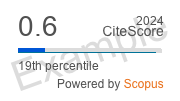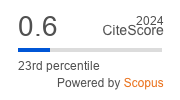Organizational and economic advantages of implementing pre-hospital pre-radiation topometric training in the activities of the Primorsky Regional Oncology Dispensary
https://doi.org/10.29001/2073-8552-2025-40-3-205-211
Abstract
Introduction. Due to the increasing number of cancer patients, it is necessary to improve the quality of specialized medical care that is offered to them. Radiation therapy has been one of the most significant and rapidly developing methods of treating malignant neoplasms for several decades. The equipment, technologies, and organization of radiation therapy in specialized medical institutions are constantly being improved. However, since the beginning of 2024, there has been a critical situation in the radiation therapy departments of the Primorsky Regional Cancer Center, which is caused by the long waiting lists for patients who are referred for radiation therapy in a 24-hour hospital. An analysis of the delay in hospitalization for radiation therapy has identified the need to optimize the existing system for organizing pre-radiation preparation.
Aim: To study the organizational and clinical-economic effectiveness of implementing of pre-hospital pre-radiation topometric training in the activities of an oncological dispensary.
Material and Methods. The study used statistical data and regulations governing the provision of medical care in the field of “oncology”, applied the method of clinical and economic research “impact on the budget”, general scientific methods – systematization and comparison.
Results. The scientific substantiation of the clinical and economic efficiency of the organization of pre-radiation topometric training at the pre-hospital stage is presented. The possibility of carrying out at least 220 additional hospitalizations per year to provide highly effective medical care to patients with oncological diseases without additional financial costs for increasing the bed capacity has been proven. The financial equivalent of the achieved benefits has been calculated, amounting to more than 3 million 280 thousand rubles per year.
Conclusion. The introduction of pre-hospital pre-radiation training significantly improves the quality of specialized medical care for patients with cancer, is clinically effective and economically justified. The most valuable aspect of the organizational improvement being studied is the absence of the need to increase financial investments in the activities of a medical organization. The benefits obtained can be further increased by changing the order of topometry processes and inpatient patient card design for the category of patients who have not completed pre-radiation training at the pre-hospital stage.
Keywords
About the Authors
Yu. Yu. PetukhovaRussian Federation
Yulia Yu. Petukhova - Cand. Sci. (Med.), Deputy Chief Medical Officer, GBUZ PKOD.
59, Russkaya str., Vladivostok, 690105; 10, Ajax settlement, Russian island, Vladivostok, 690922
K. V. Stegny
Russian Federation
Kirill V. Stegny - Dr. Sci. (Med.), Professor, Corresponding Member of the Russian Academy of Sciences, Chief Physician, GBUZ PKOD.
59, Russkaya str., Vladivostok, 690105; 10, Ajax settlement, Russian island, Vladivostok, 690922
P. V. Statinov
Russian Federation
Pavel V. Statinov - head of the Department of medical and physical support of radiation therapy, GBUZ PKOD.
59, Russkaya str., Vladivostok, 690105
References
1. Pathak P.K., Vashisht S.K., Baby S., Jithin P.K., Jain Y., Mahawar R. et al. Commissioning and quality assurance of Halcyon(TM) 2.0 linearaccelerator. Rep. Pract. Oncol. Radiother. 2021;26(3):433–444. https://doi.org/10.5603/RPOR.a2021.0065.
2. Caravani K., Murry R., Healy B. Characterisation of in-room leakage and scattered radiation for the Varian Halcyonlinearaccelerator. Phys. Eng. Sci. Med. 2022; 45(1):73–81. https://doi.org/10.1007/s13246-021-01084-1.
3. Aland T., Jarema T., Trapp J.V., Kairn T. Patient-specific quality assurance on a Varian. Phys. Eng. Sci. Med. 2021;44(2):565–572. https://doi.org/10.1007/s13246-021-00986-4.
4. Gao S., Chetvertkov M.A., Cai B., Dwivedi A., Mihailidis D., Ray X. et al. Beam energy metrics for the acceptance and quality assurance of Halcyon linear accelerator. J. Appl. Clin. Med. Phys. 2021;22(7):121–127. https://doi.org/10.1002/acm2.13281.
5. Sarkar B., Biswal S.S., Shahid T., Ghosh T., Bhattacharya J., De A. et al. Comparative dosimetric analysis of volumetric modulated arc therapy based craniospinal irradiation plans between Halcyon ring gantry and TrueBeam C-arm linear accelerator. Sci. Rep. 2023;13(1):30–34. https://doi.org/10.1038/s41598-023-30429-x.
6. Seok J.H., Ahn S.H., Ahn W.S., Choi D.H., Shin S.S., Choi W. et al. Correction to: Comparison of skin dose in IMRT and VMAT with TrueBeam and Halcyonlinearaccelerator for whole breast irradiation. Phys. Eng. Sci. Med. 2024;47(2):45–53. https://doi.org/10.1007/s13246-024-01395-z.
7. Toskich B., Lewandowski R.J. Computational modeling of radioembolization: How to calculate infinity. Cardiovasc. Intervent. Radiol. 2021;44(12):2020–2021. https://doi.org/10.1007/s00270-021-02989-w.
8. Mudge M.C., Green E. Radiotherapy in equine practice. Vet. Clin. North. Am. Equine Pract. 2024;40(3):397–408. https://doi.org/10.1016/j.cveq.2024.07.005.
9. Черных М.В., Крылова Т.А. Методология клинических аудитов отделений лучевой терапии в РФ на основе принципов аудита МАГАТЭ QUATRO. Медицинская радиология и радиационная безопасность. 2024;69(3):68–71. https://doi.org/10.33266/1024-6177-2024-69-3-68-71.
10. Spampinato S., Tanderup K., Marinovskij E., Axelsen S., Pedersen E.M., Pоtter R. et al. MRI-based contouring of functional sub-structures of the lower urinary tract in gynaecological radiotherapy. Radiother. Oncol. 2020;145:117–124. https://doi.org/10.1016/j.radonc.2019.12.011.
11. Stuschke M., Pоttgen C. (18) F-FDG PET/CT for target volume contouring in lung cancer radiotherapy. J. Nucl. Med. 2020;61(2):178– 179. https://doi.org/10.2967/jnumed.120.251660.
12. Khaw P., Do V., Lim K., Cunninghame J., Dixon J., Vassie J. et al. Radiotherapy quality assurance in the PORTEC-3 (TROG 08.04) trial. Clin. Oncol. (R. Coll. Radiol.). 2022;34(3):198–204. https://doi.org/10.1016/j.clon.2021.11.015.
13. Kunzel L.A., Nachbar M., Hagmuller M., Gani C., Boeke S., Wegener D. et al. Clinical evaluation of autonomous, unsupervised planning integrated in MR-guided radiotherapy for prostate cancer. Radiother. Oncol. 2022;168:229–233. https://doi.org/10.1016/j.radonc.2022.01.036.
14. Zhang X., Yan D., Xiao H., Zhong R. Modeling of artificial intelligencebased respiratory motion prediction in MRI-guided radiotherapy: a review. Radiat. Oncol. 2024;19(1):140–146. https://doi.org/10.1186/s13014-024-02532-4.
15. Hoffmann L., Persson G.F., Nygаrd L., Nielsen T.B., Borrisova S., Gaard-Petersen F. et al. Thorough design and pre-trial quality assurance (QA) decrease dosimetric impact of delineation and dose planning variability in the STRICTLUNG and STARLUNG trials for stereotactic body radiotherapy (SBRT) of central and ultra-central lung tumours. Radiother. Oncol. 2022;171:53–61. https://doi.org/10.1016/j.radonc.2022.04.005.
16. Nikitas J., Smith L.M., Gao Y., Ma T.M., Sachdeva A., Yoon S.M. et al. The role of adaptive planning in margin-reduced, MRI-guided stereotactic body radiotherapy to the prostate bed following radical prostatectomy: Post-hoc analysis of a phase II clinical trial. Radiother. Oncol. 2023;183:119–121. https://doi.org/10.1016/j.radonc.2023.109631.
17. Yagihashi T., Inoue K., Nagata H., Yamanaka M., Yamano A., Suzuki S. et al. Effectiveness of robust optimization against geometric uncertainties in TomoHelical planning for prostate cancer. J. Appl. Clin. Med. Phys. 2023;24(4):83–81. https://doi.org/10.1002/acm2.13881.
18. Frederick A., Roumeliotis M., Grendarova P., Quirk S. Performance of a knowledge-based planning model for optimizing intensity-modulated radiotherapy plans for partial breast irradiation. J. Appl. Clin. Med. Phys. 2022;23(3):135–136. https://doi.org/10.1002/acm2.13506.
19. Cilla S., Macchia G., Romano C., Morabito V.E., Boccardi M., Picardi V. et al. Challenges in lung and heart avoidance for postmastectomy breast cancer radiotherapy: Is automated planning the answer? Med. Dosim. 2021;46(3):295–303. https://doi.org/10.1016/j.meddos.2021.03.002.
Review
For citations:
Petukhova Yu.Yu., Stegny K.V., Statinov P.V. Organizational and economic advantages of implementing pre-hospital pre-radiation topometric training in the activities of the Primorsky Regional Oncology Dispensary. Siberian Journal of Clinical and Experimental Medicine. 2025;40(3):205-211. (In Russ.) https://doi.org/10.29001/2073-8552-2025-40-3-205-211





.png)





























